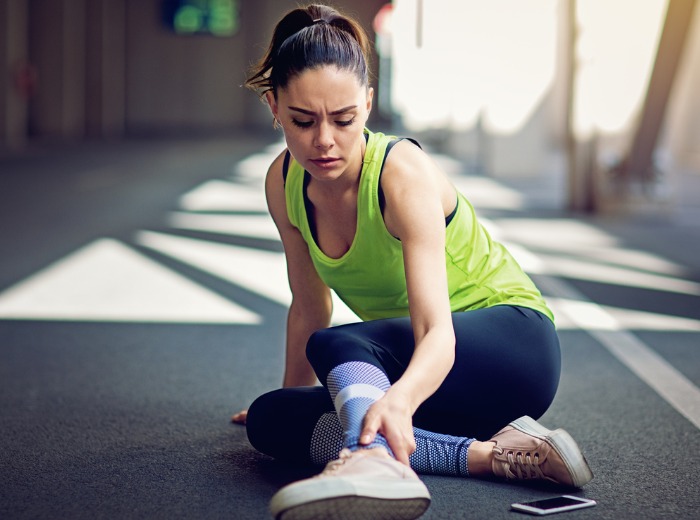Topicals cash in on self care trend
In Common conditions
Follow this topic
Bookmark
Record learning outcomes

A Bupa survey has revealed that while 61 per cent of UK adults exercised during lockdown, 7.2 million potentially injured themselves doing so. As lockdown exercise habits have continued, pharmacies have found themselves pressed into action, advising customers and treating minor injuries, aches and pains.
One in five people typically consult their GPs about musculoskeletal conditions, but during the pandemic, more of these patients have been going to pharmacies for advice, especially for conditions like back pain, which affects a third of adults at some point each year.
Musculoskeletal conditions represent a huge health burden, with 18.8 million of us affected in the UK, according to the State of Musculoskeletal Health report by Versus Arthritis. This equates to 22 per cent of the total burden of ill health in the UK, with low back and neck pain the main causes across all ages. And many people are not getting the treatment they need to live independent and pain-free lives.
Musculoskeletal conditions in numbers
- Over 430,000 people have rheumatoid arthritis
- Around 1.6m have gout
- Over 8.75m over 45s have sought treatment for osteoarthritis
- Around 10m suffer with chronic back pain
- Some 1.7-2.8m adults have fibromyalgia in the UK
- Three million have osteoporosis
- There are 500,000 fragility fractures every year
There is a clear link between physical inactivity and musculoskeletal conditions. Four in 10 of those living with such a problem are inactive. Regular physical activity reduces the risk of joint and back pain by 25 per cent, hip fractures by 68 per cent and falls by 76 per cent.
Obesity is another main risk factor; seven out of 10 people with a chronic musculoskeletal condition are overweight or obese, damaging weight bearing joints such as knees, making osteoarthritis at least twice as likely.
The pandemic effect
The sector is worth £117m (IRI year to June 2020), down 6.3 per cent on last year. At the height of lockdown (12 weeks to 13 June), sales had fallen 31.6 per cent. In pharmacies, topical sales are valued at £71.8m, down 9 per cent on last year. Interestingly, the big high street players such as Boots and Superdrug saw topicals sales drop by 9 per cent year on year, compared to independents who were down only 1.8 per cent. Mentholatum saw sales increase in independents by 6.6 per cent, indicating a trend towards local shopping.
According to Mintel (OTC Analgesics, May 2020), some 22 per cent of people said they had used a topical analgesic during the last year. While the percentage of consumers using topical wraps for pain relief dropped, 68 per cent used a cream, gel, spray or rub.
Musculoskeletal conditions represent a huge health burden, with 18.8 million of us affected in the UK
In the BUPA survey about exercise habits, only a quarter of the estimated 7.2 million potentially injured people sought medical help; 42 per cent did nothing. “As so many more of us are cycling, running and working out at home, the pharmacy team should be ready with advice and recommendations for treating less serious sporting injuries,” says Jillian Watt, director of marketing and NPD at the Mentholatum Company. “Topical pain relief products are ideal for acute and chronic musculoskeletal pain. It is good to remind customers that drug-free topical analgesics do not enter the bloodstream, so they are associated with a lower risk of stomach issues.
“During lockdown, people knew they could speak to someone face-to-face about health concerns at the pharmacy, giving many more people the chance to see that this can be their first port of call for less serious problems. It also means those who have been self-treating successfully with topical analgesics are likely to continue to do so.”
At Traumeel, a spokesperson comments: “Soft tissue injuries are an area where pharmacies can really help. The use of topical pain relief is now accepted as an easy way to treat inflammation. According to the latest global marketing report, growth in the topical pain relief market is set to double in value in the next five years.”
At Numark, OTC business development executive Cathy Crossthwaite says topical analgesics hold 5 per cent of the total medicines category. “Pharmacy can offer useful one-to-one advice to customers that they wouldn’t get elsewhere, putting pharmacy in a unique position to support customers without needing a GP appointment.”
She stresses the importance of ensuring staff provide information on correct usage of topical analgesics, such as only to apply sparingly, up to four times a day, and remembering to wash hands after use. “The main queries you’re likely to get are ‘does this interact with my regular medication?’, ‘I’m really struggling with back pain’, ‘I’m currently taking x but it’s not working, what can you recommend?’ and ‘I’m applying this gel, but it doesn’t seem to be working, can I apply more or put a thicker layer on?’”
Alphega Pharmacy member at Healthways pharmacy, Pinner, Dhimant Patel says: “In my pharmacy, requests for topical pain management are frequent. The newer range of products are user friendly and one application can last up to 24 hours. Community pharmacy is well placed to grow this category. Many customers don’t know there are stronger, faster working products.”
The trouble with backpacks
 A study on ‘Backpack forces on the spine’ published in Surgical Technology International has examined the effects of backpacks on the spine. Researchers placed incremental weights in a backpack using both shoulder straps and the spine in a neutral position and compared it with the spine tilted forward 20 degrees.
A study on ‘Backpack forces on the spine’ published in Surgical Technology International has examined the effects of backpacks on the spine. Researchers placed incremental weights in a backpack using both shoulder straps and the spine in a neutral position and compared it with the spine tilted forward 20 degrees.
Under all the weight conditions examined, the force experienced by the neutral spine was 7.2 times the added weight. For the 20 degrees forward posture, the value rose to 11.6 times, says author and spinal surgeon Dr Kenneth Hansraj.
He has this advice for reducing the strain on the spine when carrying a backpack:
- One book in the bag equals seven books to the spine. Pack only what is necessary
- Embrace digital textbooks – they are easier to read and access pages and do not transmit as much force on the spine
- Proper posture is important. Ears above the shoulders, chest pulled back, chin level with the floor and abdomen firm
- Wear both straps. Using one strap means one side gets twice the amount of force
- Keep the backpack close to the body to diminish the force on the spine
- Build strong core and thigh muscles as they act as shock absorbers.
A safe load is said to be 10 per cent of bodyweight in children, 13 per cent in adolescents, 15 per cent in young adults and 15-20 per cent in older adults.
Improve your topical analgesics category
“Establish your pharmacy as the place for clear, informed advice about which is the appropriate product for each type of musculoskeletal pain, and stock a good range of products from trusted manufacturers. Make sure you include affordable products in the fixture,” says the Mentholatum Company’s Jillian Watt.
“The category is not well understood, so conversations and point of sale will be important,” says Numark’s Cathy Crossthwaite. “Hot and cold relief dominates GSL, while NSAIDs are more prominent behind the counter. When building your fixture, leading brands will help the customer locate the category. Site next to oral analgesics to create a total pain category.”
“Pain relief can be confusing. Consumers appreciate advice on how different delivery systems work and what would be most suitable,” says Traumeel’s spokesperson. “Ask brand sales teams, wholesalers and distributors what they can offer to make pain fixtures easier for customers to access.”
“Ensuring pharmacy staff are knowledgeable and confident in advising on topical pain relief will ensure customers’ needs are best met,” says Alphega member Dhimant Patel. “Remember to tell customers that treatment is for short term use only and if things don’t improve, they should see their GP.”
Views of the P3pharmacy category panel
“Since the pandemic, we’ve seen sales of topical analgesics increase, partly due to worries about oral ibuprofen. Our best seller is Voltarol; we do well with link sales of Algaecal calcium and glucosamine supplements. We get queries about compatible medication. Display topicals alongside oral analgesics to raise awareness. Use shelf wobblers to steer customers towards relevant supplements for joint health. Offer advice where you can; customers are often treating long term conditions and would welcome lifestyle support.” Gareth Evans, Wansford Pharmacy, Peterborough
“This category has become more important since Covid as GP appointments have been so hard to get. Queries mostly relate to muscle, joint and also back pain. Ibuleve is our best selling topical product. We recommend Voltarol if this is not effective. We find people are happy to buy rather than wait for an appointment, even if they get free prescriptions. P lines have to be kept behind counter, but make the most of GSL products such as Deep Heat patches by displaying these in an accessible part of the pharmacy.” Lila Thakerar, Shaftesbury Pharmacy, Harrow
“This is one of our largest categories as it can affect a range of ages. Typical queries relate to muscular injuries or existing conditions such as arthritis (‘What would be most suitable and effective?’). Top sellers are ibuprofen gel, Voltarol gel and Deep Heat gel/sprays. We’ve seen more patients asking about natural remedies such as arnica gel and Tiger Balm.
I recommend stocking a range of ibuprofen gel products, including cost-effective generics. Try to group topical pain relief products together so patients are able to compare.” Yasmeen Afsar, Well Pharmacy, Hartlepool
